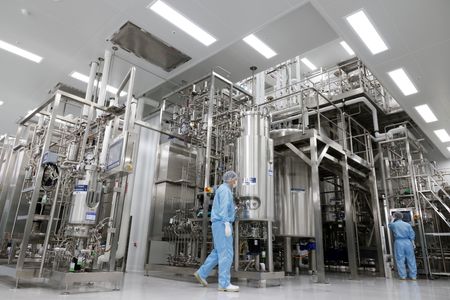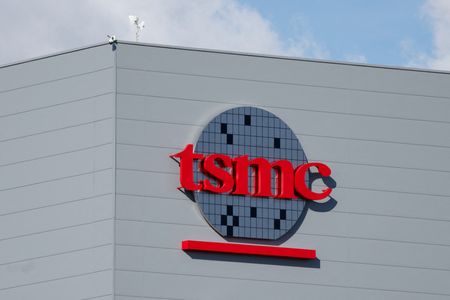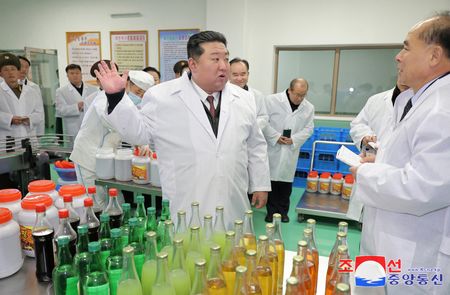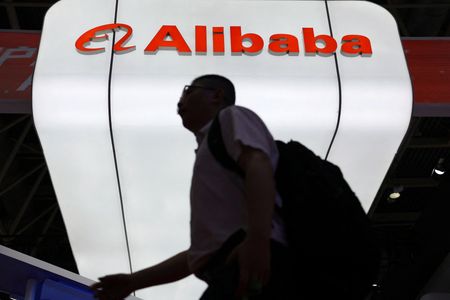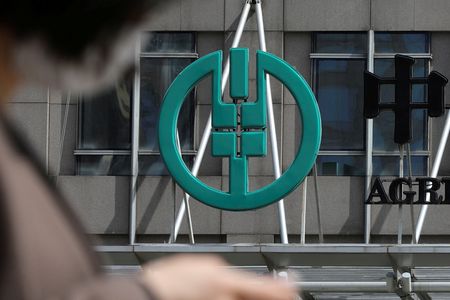By Jihoon Lee
SEOUL (Reuters) – South Korea’s factory activity contracted at the steepest pace in 31 months in April as demand plunged on U.S. President Donald Trump’s sweeping tariffs, while firms turned most pessimistic since the pandemic, a private-sector survey showed on Friday.
The survey result was in stark contrast to South Korea’s upbeat trade data a day earlier, which outperformed market expectations on robust demand for semiconductors, though it also showed signs of tariffs starting to hurt the country’s key auto sector.
The Purchasing Managers Index (PMI) for manufacturers in Asia’s fourth-largest economy, released by S&P Global, fell to 47.5 in April, from 49.1 in March.
It was the third monthly reading below the 50-mark, which separates expansion from contraction, and the lowest point since September 2022.
Output and new orders fell by the most since June 2023, sub-indexes showed.
And in a sign of how Trump’s tariff policies are upending some of the major trade-reliant economies, new export orders decreased for the first time since October 2024 and also marked the biggest drop in 22 months.
“According to manufacturers, challenging domestic economic conditions and the impact of U.S. tariffs weighed heavily on the sector, stymieing new product launches and sales in both domestic and external markets,” said Usamah Bhatti, economist at S&P Global Market Intelligence.
Last week, South Korea said it agreed with the United States to craft a trade package aimed at removing new U.S. tariffs before the pause on reciprocal tariffs, including 25% duties on South Korea, is lifted in July, after a first round of trade talks.
South Korean manufacturers’ outlook for the year ahead turned pessimistic for the first time in December, when domestic political uncertainty heightened due to former President Yoon Suk Yeol’s failed attempt to impose martial law.
The degree of pessimism was the most severe since June 2020. Excluding the COVID-19 pandemic period, it was the worst in the survey history dating back to April 2012.
Near-term indicators of input purchases and backlogs of work also fell by the most in 31 months and 26 months, respectively, while job cuts were the biggest since September 2020.
(Reporting by Jihoon Lee; Editing by Shri Navaratnam)

